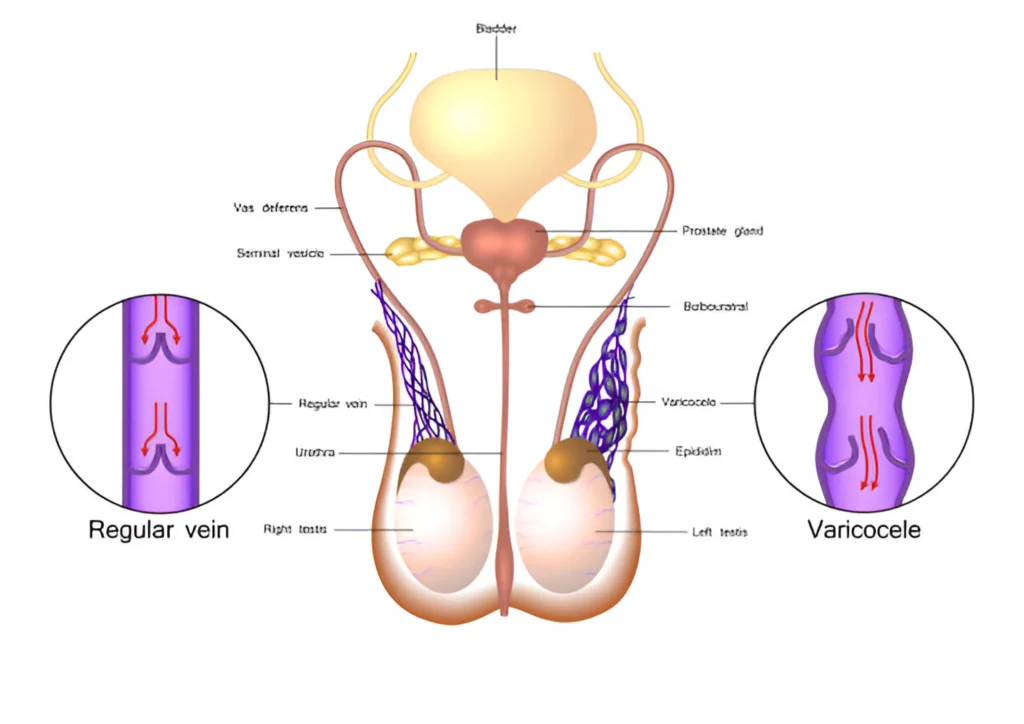Scrotal Swelling
I. Introduction
Definition of Scrotal Swelling
Scrotal swelling refers to an abnormal increase in the size of the scrotum. The condition can vary in severity and may affect one or both sides. It can result from various causes, including infection, inflammation, injury, or a pre-existing medical condition. Scrotal enlargement is a common issue that can affect individuals of any age.
Importance of Seeking Medical Attention
Seeking medical attention is crucial for proper diagnosis, timely treatment, and expert guidance. Early detection of health issues allows for accurate diagnoses by healthcare professionals, providing access to effective treatments and management plans. Regular medical consultations are vital for maintaining overall health and well-being.

II. Types of Scrotal Swelling
Swollen Scrotum:
A swollen scrotum is characterized by an enlarged or puffy scrotal sac. Causes include fluid buildup, inflammation, infection, trauma, or conditions like hydrocele or inguinal hernia. This may be accompanied by pain, heaviness, and discomfort.
Testicular Swelling:
Testicular swelling refers to the enlargement of one or both testicles. Possible causes include testicular torsion, testicular cancer, and testicular inflammation (orchitis and epididymitis). Symptoms often include changes in testicular texture, discomfort, or soreness.
Painless Scrotal Swelling:
Painless scrotal swelling involves enlargement or thickening of the scrotum without pain. It may be caused by hydrocele, spermatocele, or varicocele. This type of swelling is often discovered inadvertently or during routine self-examination.
Varicocele:
Varicocele occurs when blood vessels in the scrotum swell and dilate due to faulty vein valves, leading to blood pooling. Typically affecting the left side of the scrotum, varicoceles can cause pain, heaviness, and are linked to reduced sperm count and male infertility in some cases.
III. Causes of Scrotal Swelling
Infection:
Infections such as epididymitis or orchitis are common causes of scrotal swelling. These infections, caused by bacteria or viruses, can result in pain, redness, and increased temperature in the scrotum.
Hernia:
A hernia occurs when internal organs or tissues protrude through weakened abdominal muscles. An inguinal hernia can cause scrotal enlargement, protrusion, or soreness as a section of the intestine moves into the inguinal canal.
Varicocele:
Varicocele involves the enlargement of scrotal veins due to blood flow obstruction. This condition can lead to scrotal swelling.
Testicular Torsion:
Testicular torsion happens when the spermatic cord twists, cutting off blood supply. This medical emergency causes sudden, intense scrotal pain and swelling.
Cancer:
While rare, testicular cancer can cause scrotal enlargement. Symptoms may include a non-painful tumor or mass in the testicle, along with stiffness, weight, or discomfort.
Hydrocele:
A hydrocele involves fluid accumulation around the testicle, leading to scrotal enlargement. Although typically asymptomatic, it can sometimes cause heaviness or pain.
IV. Diagnosis of Scrotal Swelling
- Medical History Healthcare professionals take a comprehensive medical history, asking about the onset, duration, accompanying symptoms, and any relevant injuries or illnesses. This helps identify potential causes of scrotal swelling.
- Physical Examination A thorough physical examination of the scrotum and surrounding areas is conducted. Healthcare providers look for signs of edema, erythema, or abnormalities in size, shape, or texture. A gentle examination checks for discomfort, lumps, or other irregularities. The inguinal area, abdomen, and groin may also be assessed for related issues.
- Ultrasound and Color Doppler Ultrasound imaging and Color Doppler are non-invasive diagnostic tools used to assess scrotal hypertrophy. These provide high-resolution images of the scrotum, genitalia, epididymis, and surrounding tissues. Ultrasound can identify abnormalities like hydroceles, tumors, and varicoceles. Color Doppler ultrasonography evaluates blood flow and detects vascular anomalies.
V. Treatment of Scrotal Swelling
Minimally Invasive Treatment:
For minimal invasive treatment, varicocele embolization using coils or glue is a common approach. This procedure blocks the abnormal veins causing the swelling, reducing symptoms and improving scrotal health.
Surgical Intervention
In more severe cases, surgery may be required to remove or repair affected veins.
VI. Prevention of Scrotal Swelling
- Proper Hygiene Maintaining good hygiene in the genital area helps prevent infections and reduces the risk of scrotal swelling.
- Avoiding Injuries Taking precautions to avoid injuries to the scrotum, such as wearing protective gear during sports or activities, can help prevent swelling.
- Using Protection During Sexual Activity Using condoms or other forms of protection during sexual activity reduces the risk of sexually transmitted infections that could lead to scrotal swelling.
By following these preventive measures, individuals can minimize the likelihood of scrotal swelling and maintain good scrotal health.
VII. Conclusion:
Scrotal enlargement requires prompt medical attention, especially in the case of varicocele. Timely diagnosis and treatment can slow the condition’s progression, minimize symptoms, and reduce the risk of complications.
Minimally invasive treatments, such as embolization with coils or adhesive patches, have proven effective, offering quicker recovery times and fewer risks compared to traditional surgical methods. Immediate medical care and evaluation of minimally invasive treatment options can improve scrotal health and increase the likelihood of positive outcomes.
Regular medical checkups and consultations are essential for the prevention, diagnosis, and treatment of scrotal edema. Prioritizing these can lead to more effective treatment and better overall health outcomes.

